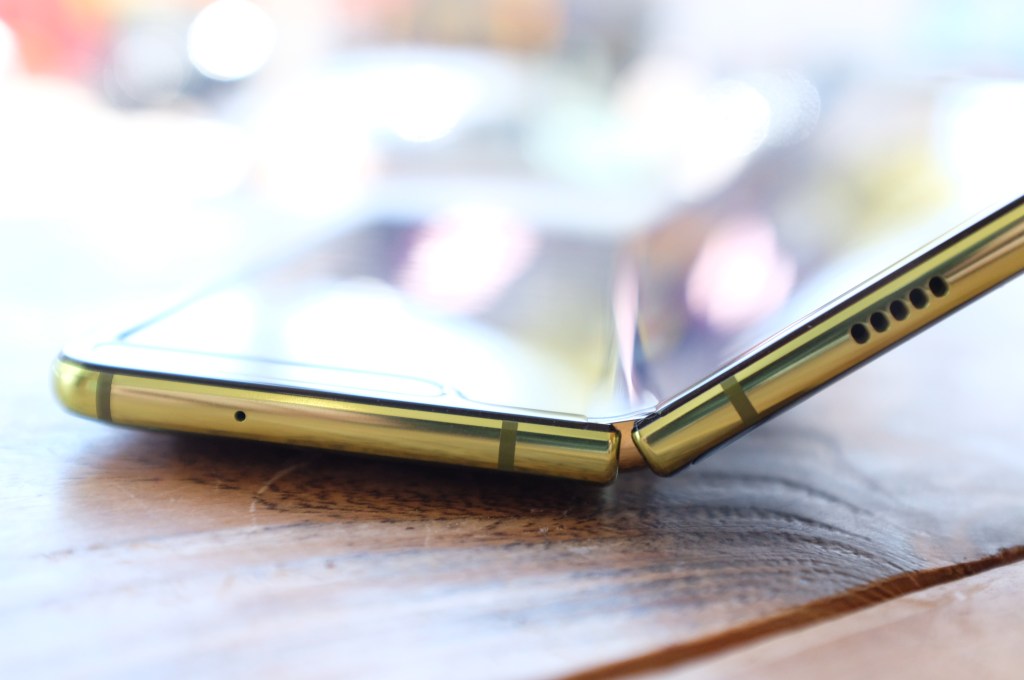I wrote a lot about the Galaxy Fold here. After a week with the device, I was left with mixed feelings independent of the whole ongoing display saga. The TLDR; of it is the story of a first-generation device that’s full of promise but still a bit clunky and prohibitively priced.
Of course, the real reason we couldn’t possibly recommend the device is the high percentage of issues around the device. Samsung issued a handful of early units to reviewers and multiple devices returned with broken screens. Samsung was quick to downplay the issue, but ultimately apologized, issued early findings and pushed the release back to an undisclosed date.
The Fold was supposed to be released today, and until Monday, Samsung had us convinced that it would hit that optimistic time frame. The fact of it all, however, is that the timing was always in question. The device was officially unveiled at an event in February. A week later at Mobile World Congress, the closest we got to the device was the other side of a plate of display glass and a velvet rope. It doesn’t exactly instill confidence in a product.
Later that day, Huawei gave us hands-on time with its own (still unreleased) foldable, the Mate X. Granted, the time was limited and a rep was hovering over us the whole time, but being able to touch the device goes a long way.
For the moment, Samsung’s in lockdown mode. Reviewers (ourselves included) have returned the devices at the company’s behest. A week with the phone was always the plan, as Samsung was likely planning to send it out to additional reviewers. I suspect all the breakages have put the brakes on that for now.
More notably, Samsung convinced iFixit to pull a lengthy teardown that referred to the Fold’s display as “alarmingly fragile.” The write-up has been replaced by a lengthy note explaining the site’s position and Samsung’s role in the takedown:
We were provided our Galaxy Fold unit by a trusted partner. Samsung has requested, through that partner, that iFixit remove its teardown. We are under no obligation to remove our analysis, legal or otherwise. But out of respect for this partner, whom we consider an ally in making devices more repairable, we are choosing to withdraw our story until we can purchase a Galaxy Fold at retail.
It’s easy to understand why the piece irked Samsung, of course, but it’s hard to imagine that it did much additional damage to an already problematic situation. We covered the story, along with dozens of other sites. I personally found it an insightful look at the product, as iFixit described a display that wasn’t sufficiently reinforced and an otherwise impressive gear system that let dirt and debris fall behind the screen.
In fact, Samsung’s own “initial findings” were actually pretty well in line with iFixit’s:
Initial findings from the inspection of reported issues on the display showed that they could be associated with impact on the top and bottom exposed areas of the hinge. There was also an instance where substances found inside the device affected the display performance.
From the outset, many were suspect about the product’s ability to hold up to real-world stresses without the presence of a Gorilla Glass-like screen covering. Corning has already noted that it’s working on just such a flexible material, but Samsung didn’t seem much interested in waiting.
In retrospect, the process of bringing the technology to market felt like a thoughtful, leisurely progression, followed by a potentially careless sprint the final few yards before the end zone. While Samsung had been showcasing flexible display technology since CES 2011, it no doubt saw the writing on the wall heading into this year. Royole had already launched its own reference device, and the week following the Fold’s announcement, we saw the aforementioned handset from Huawei and a reference design from TCL. Xiaomi showed off its own project at around the same time, and leaks have highlighted competition from companies like Motorola.
Samsung, it seems, wanted badly to be the first to market with a consumer device. It’s a stumble, but as we’ve pointed out previously, Samsung’s been through worse. This isn’t the Galaxy Note 7 part two for two key reasons:
- The product didn’t officially ship, so these devices could be considered a kind of (very public) extended beta
- Nothing actually exploded and the Fold hasn’t been banned from any airlines
The broader question, however is two-fold:
- What will this mean for Samsung
- What will this mean for foldables as a category
The answer, I think is the same for both: not very much. Both the phone and the category will live and die by consumer demand, not some dumb stumble by Samsung.
Huawei’s got a golden opportunity to show what can be done here (even though ongoing legal troubles will make the Mate X tough to come by in the U.S. And in spite of how well the first Fold sells, it seems likely that Samsung has a sequel in the works. Remember how masterfully the company spun the Note after the smoke had cleared? The arrival of its eight-point battery testing turned battery safety from a concern to a feature.
Of course, this will be a short-term setback from the company and product. Consumers will smartly be cautious, even after the company says it’s hammered out the original issues and firmed up a release date. If there’s major learning from the Note debacle that can be applied here, it’s that companies can be too eager to sound the all clear. Remember, the Note 7 was subject to two recalls.
But like the Note 7, these early misadventures will likely do little to impact the future of foldables — or Samsung’s bottom line.































Comment